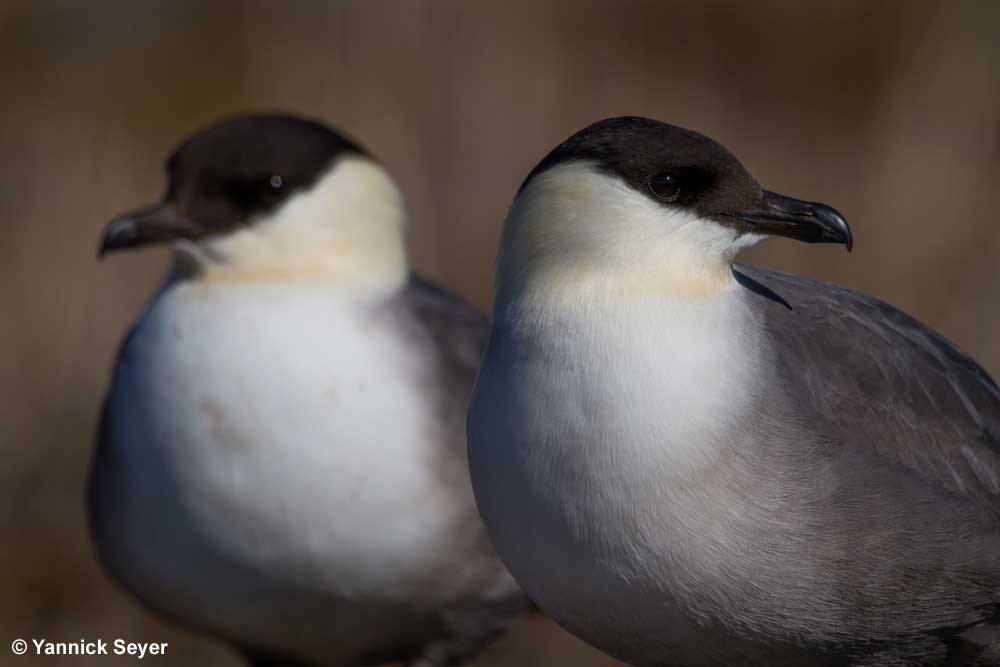
The long-tailed jaeger is the smallest of all jaegers breeding in North America. It is the most abundant and widespread species of jaegers in the Arctic where it is mostly found in dry mesic tundra. This bird has very little sexual dimorphism. While females are generally bigger than males (average body mass of females is 315 g vs. 285 g for males nesting on Bylot Island), the overlap between the size of males and females within the population makes it very difficult to distinguish them in the wild. However, our work has shown that the distinction between the two sexes is possible within a couple since the male is almost always smaller than the female.
Since the long-tailed jaeger is a seabird, it spends most of its life at sea. However, as the summer approaches, its lifestyle changes drastically to become exclusively terrestrial. It hardly ever returns to the sea during the breeding season. While its winter diet consists mostly of small fishes and surface marine invertebrates, breeding birds feed exclusively on terrestrial prey during the summer. On Bylot Island, brown and collared lemmings represent its main prey. However, when lemming abundance is lower, jaegers can feed on arthropods, passerine birds and shorebirds (mostly young). As with most avian predators, the long-tailed jaeger swallows its prey whole but rejects the indigestible parts (bones, hair, claws, feathers, etc.) in pellets that can be analysed to determine their diet. On Bylot Island, more than 95% of pellets collected on breeding sites contained lemming parts and 53% arthropods fragments showing the importance of these two food sources. Brown lemmings are more abundant, representing 60% of the lemmings identified in the pellets whereas collared lemmings represent 40%.
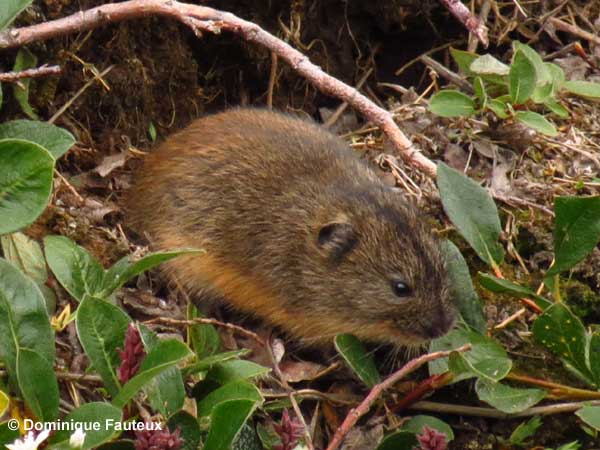 |
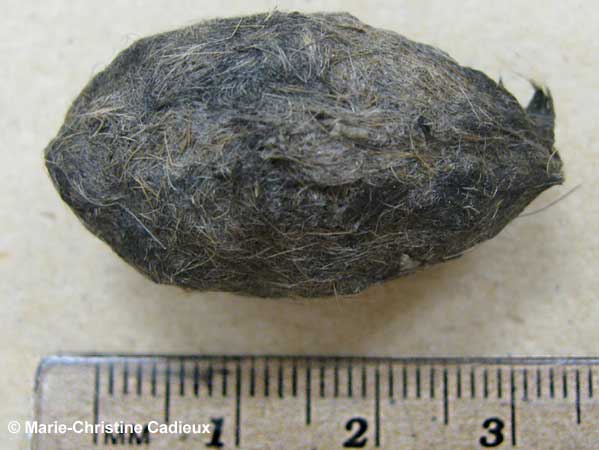 |
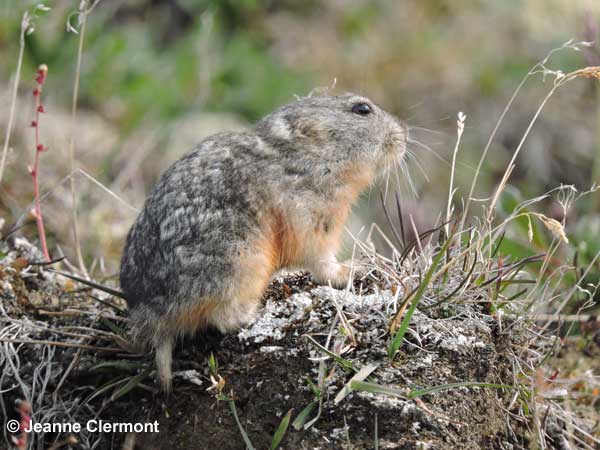 |
| Brown lemming | Long-tailed jaeger pellet | Collared lemming |
Breeding ecology
A few days before laying, the long-tailed jaegers arrive on Bylot Island and return to the territory they occupied the previous year. These birds are highly faithful to their breeding site as some pairs can breed just a few meters from their previous nest. Males and females long-tailed jaegers do not migrate together, but partners meet again each summer on their breeding site. Some couples will breed together for many years.
Upon their arrival, jaegers fly through their territory in search of their preferred prey, lemmings. Their breeding is strongly influenced by the abundance of prey and can choose not to breed when lemming populations are too low. After a few days defending their territory, if the birds decide not to breed, they will return to the sea.
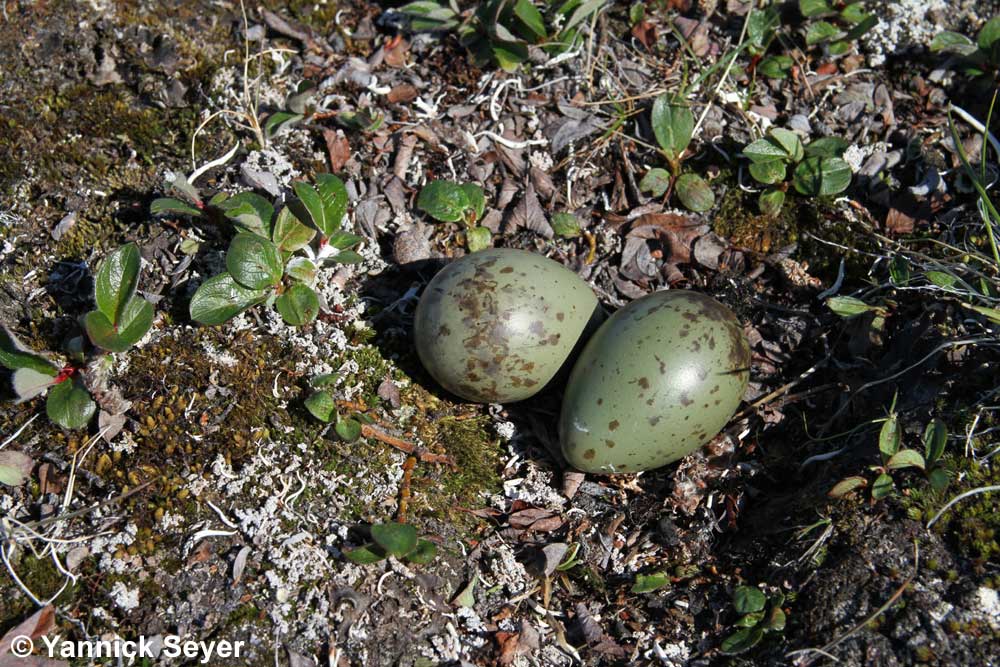
The long-tailed jaeger nest is very rudimentary. They lay eggs in a shallow depression directly on the ground. They do not use any nest material and do not build any nest structure allowing them to be very cryptic. Their nest is usually found on a small mount where they can keep an eye on their territory and protect their nest from predators, mainly the arctic fox. Jaegers attack and chase away any intruders that come within an area of approximately 1 km2 from their nest.
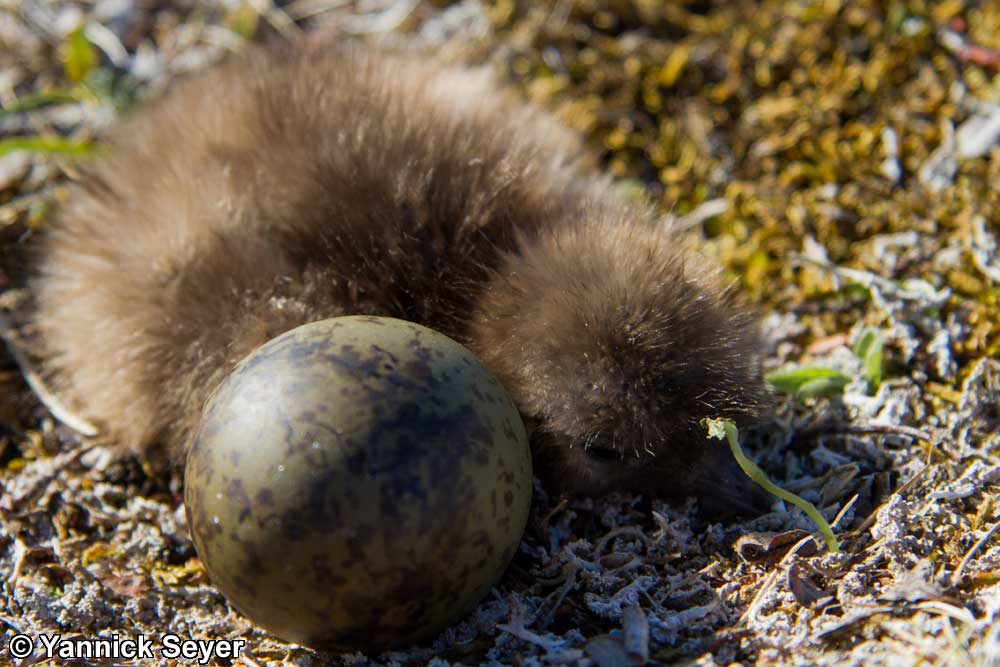
Both partners work together defending their territory, hunting for food and incubating eggs. Female normally lays two eggs, but sometimes only one is laid if conditions are not optimal. The greenish color of eggs helps to camouflage the nest. Even for experimented observers, jaeger eggs are quite difficult to locate in the vast arctic tundra. Incubation begins right after the female has laid the first egg and lasts for 23 to 26 days. Eggs usually hatch within one to two days from each other. On Bylot Island most eggs are layed between 12 and 21 June and young will hatch within the first two weeks of July. Newly hatched long-tailed jaegers are ‘precocial’, meaning that they leave the nest and move by themselves only 24 to 48 hours after hatching. They get further and further away from the nest each day reaching distances of several hundred meters within two to three weeks. This allows young to feed by themselves on arthropods. The rest of their food is provided by both parents who feed them bigger prey such as lemmings. About three weeks later, young are still dependant on their parents, but they start flying. Parents will protect and feed their young until late-August, when young will begin their first migration towards wintering grounds.
The long-tailed jaeger is a long-distance traveler
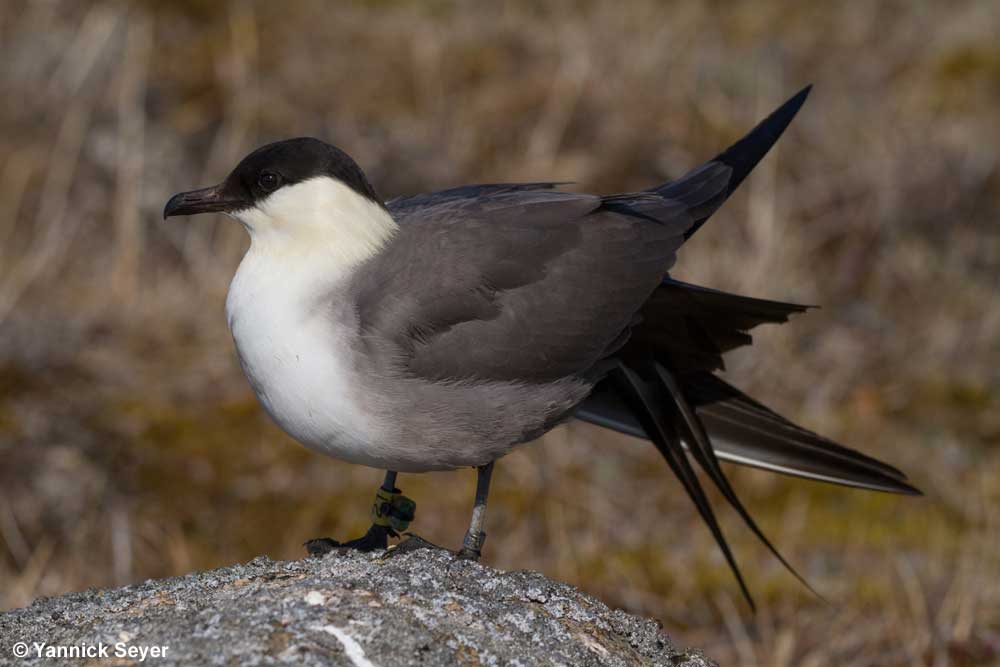 |
| Long-tailed jaeger with a geolocator attached to a plastic band on its right leg. |
In order to better understand the migration of jaegers, an important deployment of geolocators took place on Bylot Island between 2014 and 2019. These small devices (<1 g, 14 x 8 mm), are attached to the bird leg and record data year-round. They allowed us to gain knowledge on the phenology, migratory routes and winter destinations of these seabirds, which are not well known.
Data collected from individuals marked with geolocators show that adults leave their breeding grounds in late-August to start the first part of their journey, a trip of over 3,000 km. Travelling along the northern shore of Baffin, jaegers reach the North Atlantic Ocean and make a first migratory stop around the Great Banks of Newfoundland. This rich-food area allows them to feed for several weeks. In October, they undertake the second portion of their journey to southern latitudes, where they will spend a few months. This part of their migration represents an additional trip of 4,000 to 12,000 km. During the winter, jaegers are distributed off the west coast of Africa between Cape Verde and south-eastern South Africa. Four main wintering areas have been identified for the long-tailed jaeger Canadian eastern Arctic population: Cape Verde, Gulf of Guinea, the upwelling region of Benguela off Namibia, Angola and western South Africa, and eastern South Africa. Jaegers take advantage of these food-rich areas during the winter before undertaking their trip back to their breeding grounds. In March, birds start their migration north to return to the Arctic. This journey lasts a few weeks depending on the wintering area they used.
| Snowy owl | Rough-legged hawk |
